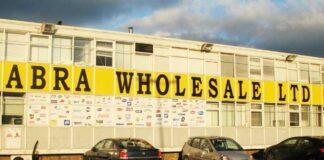2. Keep it simple: Don’t run too many promotions at the same time.
One wholesaler that knows how to pull in a crowd is Today’s Group member Dhamecha, which runs regular trade days and in-depot events. The cash & carry keeps things simple with three types of promotion: quarterly trade days through Today’s Group, three-weekly national deals through the Today’s retail club and one-week promotions organised with suppliers.
“If you have too many promotions going on at the same time, they can negate each other. It can be confusing for customers,” says area manager Naren Chotai.
The company’s system works well and annual sales are up 7.4% from the previous year at £628m.
While working with suppliers is important, it’s important to keep the customer at the front of your mind. Jason Finch, director of IT supplier Port80, says: “Wholesalers need to listen to their customers’ needs as much as they bow down to their suppliers’ demands. One of those customer needs is decent pricing.”
Bintesh Amin agrees and says there are a few changes that he’d like to see with his suppliers. “Wholesalers can improve by offering retailers products that they need in the right sizes and formats. Sometimes the products that are on offer are what the wholesaler wants to sell, rather than what I can sell in my shop.”








GETTING A GOOD DEAL OUT OF GOOD DEALS: THE ART OF PROMOTION MANAGEMENT
The impact of price promotions on sales has become ever more important to the extent that they often play a dominant role in profit generation and really drive consumer behaviour – which is exactly what they are designed to do, of course. However, the way promotions pump up sales volumes and have an impact on the sales of other lines puts great stress on the supply chain, especially on the forecasting and replenishment of fresh goods.
The challenge lies in incorporating promotion forecasting and replenishment into the supply chain planning processes; this can typically be overcome by following seven best practice tips.
1. Manage campaign information and forecast variables in the forecasting system;
2. Include logistical information such as required presentation levels as well as preferred delivery dates for initial quantities including stock for presentation purposes;
3. Let the system calculate the promotion forecast for consumer sales as well as the order forecast;
4. Review the forecasts and compare with previous campaigns - and modify them, if needed;
5. Collaborate with suppliers to ensure capacity and availability for fulfilment;
6. Execute to plan and demand;
7. Review success based on key metrics including operative supply chain KPIs and commercial KPIs
Best practice suggests that by incorporating highly granular data into a new breed of supply chain management technology, new insights can be achieved which ultimately help drive better planned and executed promotions that maximise sales without negatively affecting sales of other product lines or profit margins.
The more important promotions are for sales, the more important it is to include them in the forecasting and replenishment processes. Better promotion forecasting leads to better planned promotions using better data, which helps forecast subsequent campaigns more accurately.